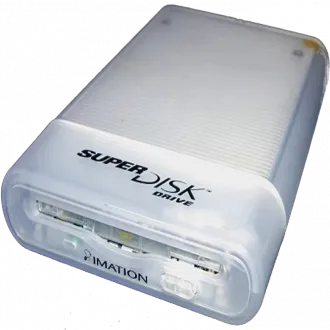SuperDisk was introduced by 3M's storage products group (later known as Imation) circa 1997 as a high-speed, SuperDisk drives came in parallel port, USB and ATAPI variants. Drivers for the SuperDisk LS-120 can be download below. Unfortunately drivers were only ever made for 32bit (x86) Operating systems.
